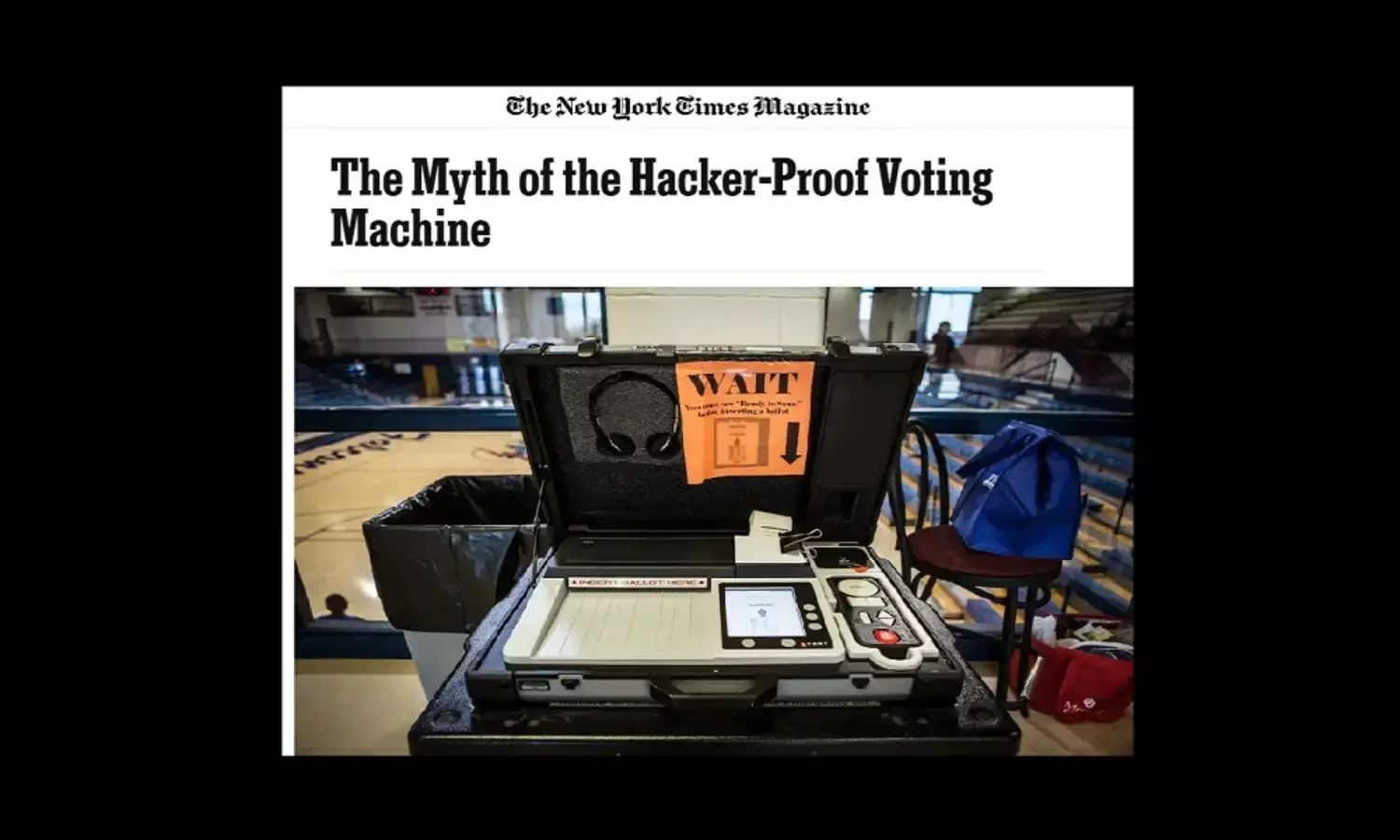The Myth Of The Tamper- Proof EVM's
Need for transparency
‘Adhuri hasraton ka ilzaam hum par lagana theek nahin…
Wafa khud se nahin hoti, khata EVM ki kahte ho.’
Believe it or not, the above Sher is composed of an Electronic Voting Machine (EVM). Or so we are led to believe by the Election Commissioner. In a world of constant lies, manipulation and deceit, when one is asked a logical question, perhaps emotion is bound to seep even into the heart of a machine.
Jokes apart, EVM manipulation is a serious affair. Even though its security and efficacy was never challenged before, with the advent of technology, it is now a different issue. And when a whole lot of information is black boxed, then instead of resolving our doubts, it raises more suspicion.
People have always questioned its functioning. The Netherlands banned it for lack of transparency. After three years of research, Ireland decided to junk them. Germany declared EVMs unconstitutional and banned it.
Italy also dropped e-voting since its results could be easily managed. In the United States, California and many other states banned EVMs if they did not have a paper trail. Venezuela, Macedonia and Ukraine stopped using EVMs after massive rigging was found. And England and France have never used EVMs.
Maybe it doesn’t suit countries with a small population. Maybe their system is different from ours. But ever since it took off in 2000, even the Indian EVM has crossed many ‘agniparikshas’, with steady updates and constant misgivings. And now researchers believe that it is possible to hack an EVM, through the use of advanced wireless technology.
Whenever allegations of EVM manipulation was raised, the Election Commission invariably comes out with two standard assertions: one, that the Indian machines are fully secure and tamper-proof; and two, that they are ‘stand alone’ devices not connected to the Internet, hence impossible to send outside signals through Wi-Fi or Bluetooth.
Guess what? According to new findings, the frightening reality is far more complicated. In this day and age, both claims can now be challenged. Research and experiments have established that EVMs can be manipulated in a variety of ways.
The higher the frequency of electromagnetic radiations (EMRs) the smaller the antenna. And since India has 5G technology, wireless hacking can be done by deploying an ultra-small transceiver circuit with an efficient tiny antenna inside the machine. And despite having a clear view (from the outside) the voters would be unable to identify such antennas and transceiver circuits.
‘The Myth of the Hacker-Proof Voting Machine’, published in ‘New York Times’ provides startling details backed by technical findings. At a Boston technology conference last month, computer scientist Alex Halderman showed how easy it was to hack into an electronic voting machine and change the result, without leaving a trace.
Technology analyst Kim Zetter, who has won four awards for her writing on how e-voting affects democracies, has collated facts and figures to cast serious doubts about the reliability, even when attached to a paper verification unit. Professor David A. Eckhardt of Carnegie Mellon University, investigated ‘vote flipping’(where you choose one candidate but the screen shows another), and found something interesting. He said that EVMs were ‘air gapped’, meaning even if they are disconnected from the internet, a remote-access software can be installed in it.
Critics therefore argue that the vulnerability of EVMs could undermine the integrity of the democratic process. After what we witnessed in Chandigarh, where an officer was caught on camera defacing ballots, imagine the huge potential of a mass scale manipulation when a machine is controlled by humans.
Democracy is of the people, for the people and should be by the people, not by electronic microchips. The argument that machines are manufactured under strict supervision by reputed public sector enterprises also can no longer be accepted at face value because the US findings point to potential for serious mischief even at the manufacturing stage.
The recent Right to Information data has also thrown up troubling questions about the logistics of EVM transport and distribution, where machines are ‘kidnapped’. Our concerns have further been buttressed by the fact that from 2018, nearly 19 lakh polling machines are ’missing’. Where have all the EVMS gone? But more important is that when the Congress leaders wanted a clarification, there was absolute silence.
Many now feel that the outcome of the election this year would hinge not so much on the mood of the electorate but on how fairly the polls are conducted. However suspicious or cynical it may sound, recent research does indicate that blind trust in EVMs might indeed be misplaced.
So when the lawyers, the opposition and even the citizens are now protesting against it, it is important to gain the trust of all. The Voter Verifiable Paper Trail system does not allow voters to verify the slip before the vote is cast. Moreover, why are the VVPATs not counted? The excuse that it will take several days is rubbished when we see that the process of voting itself is now taking several months. So how does a few extra days make a difference?
There is a good and a bad kind of doubt. Good doubt motivates us to test things out; bad doubt stops us from doing that. Therefore when voters line up to cast their precious votes, there should not be even an iota of doubt.
We should be assured of fully free and fair elections. Opaque machines, faulty counting systems and treacherous intentions could create an autocratic and oligarchic ruling establishment. And that would sound the death knell of democracy.
Therefore, instead of turning a Press Conference into a mushaira and spouting poetry, why does the Election Body not enhance its credibility by simply being more transparent?
Nargis Natarajan is a writer, author and novelist residing in Bhubaneswar. Views expressed are the writer’s own.




